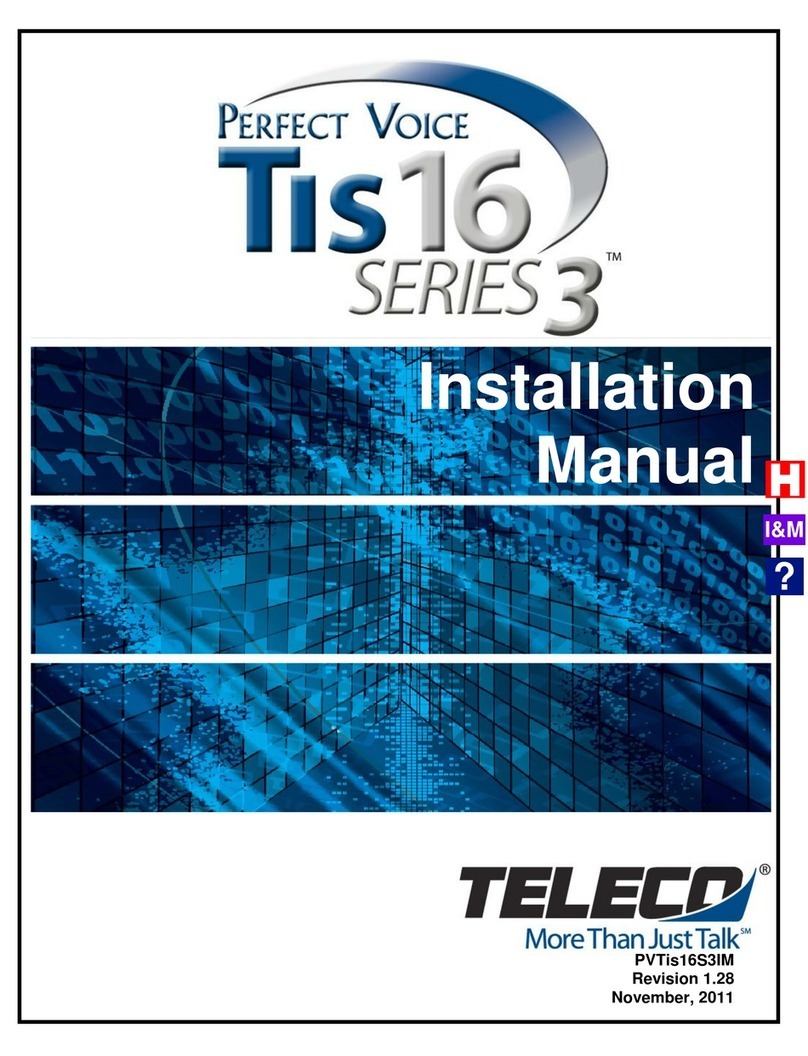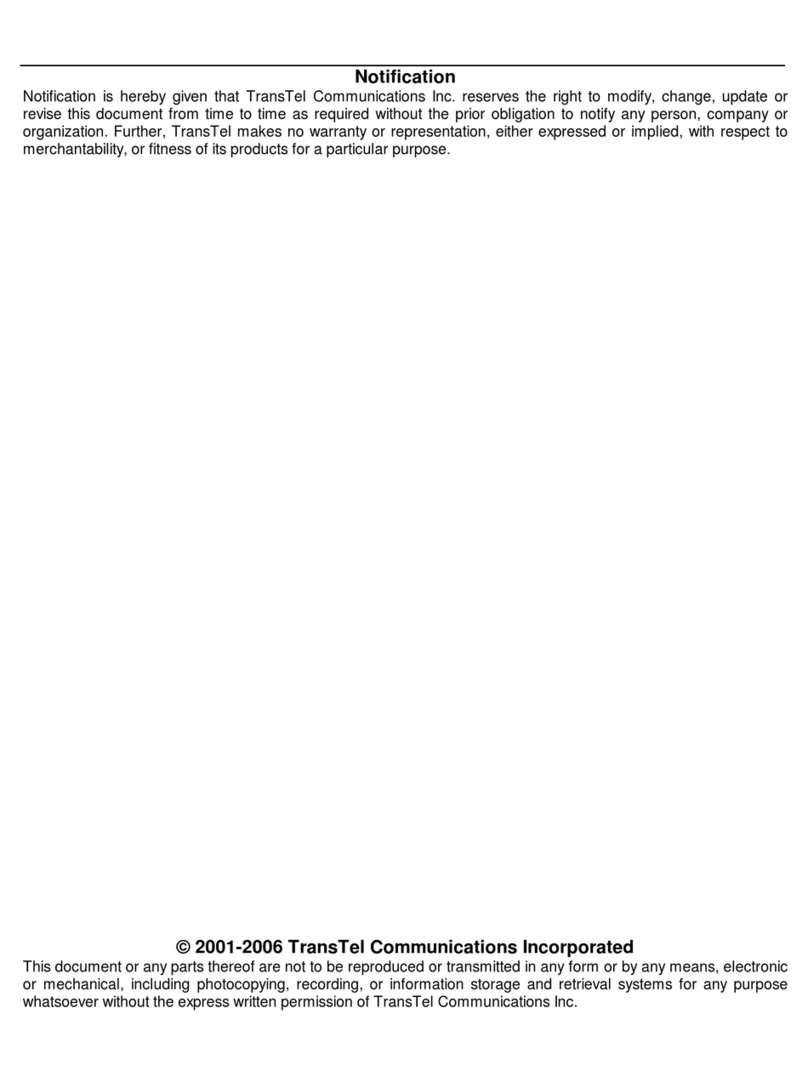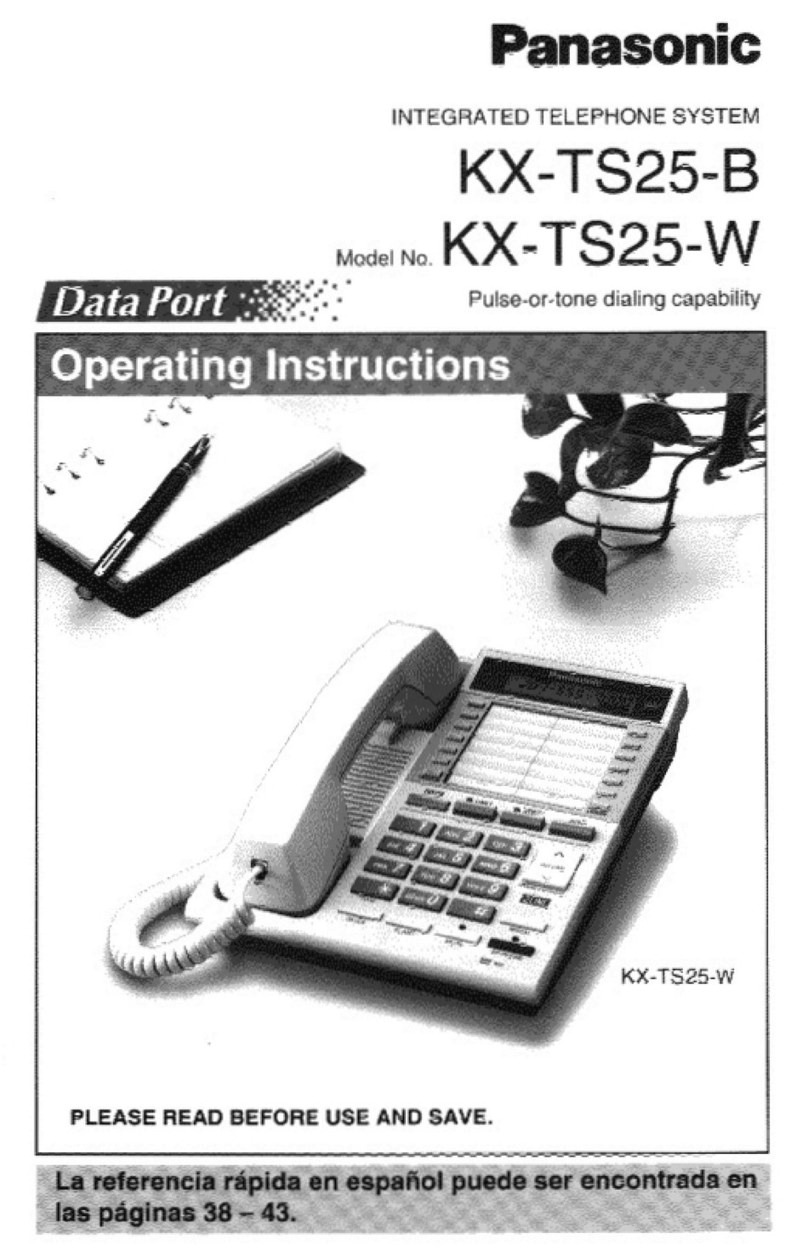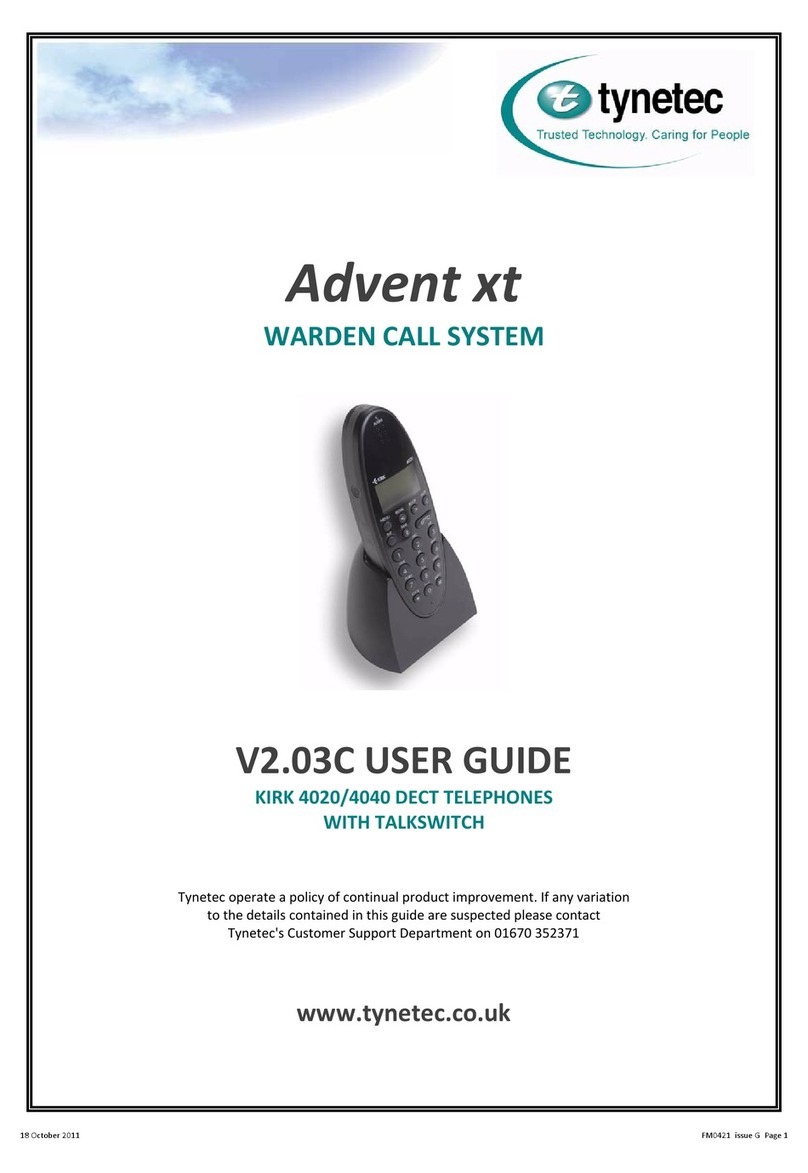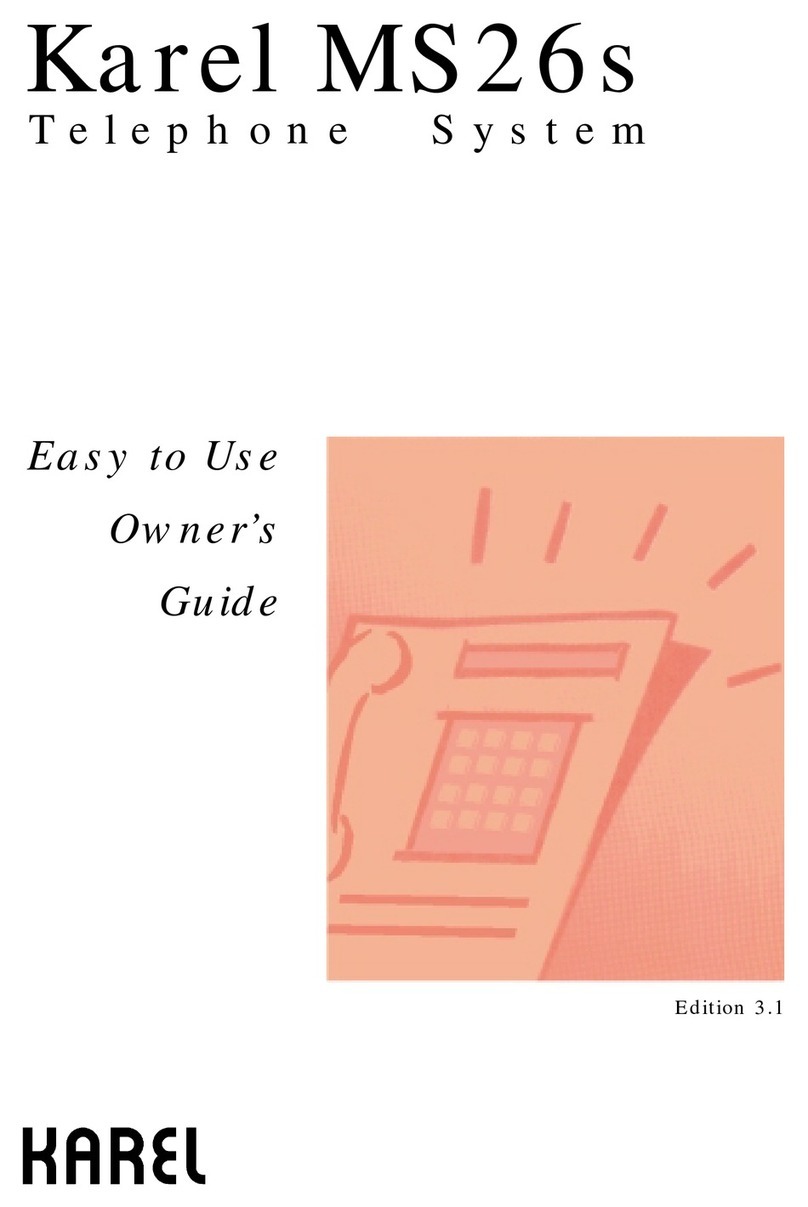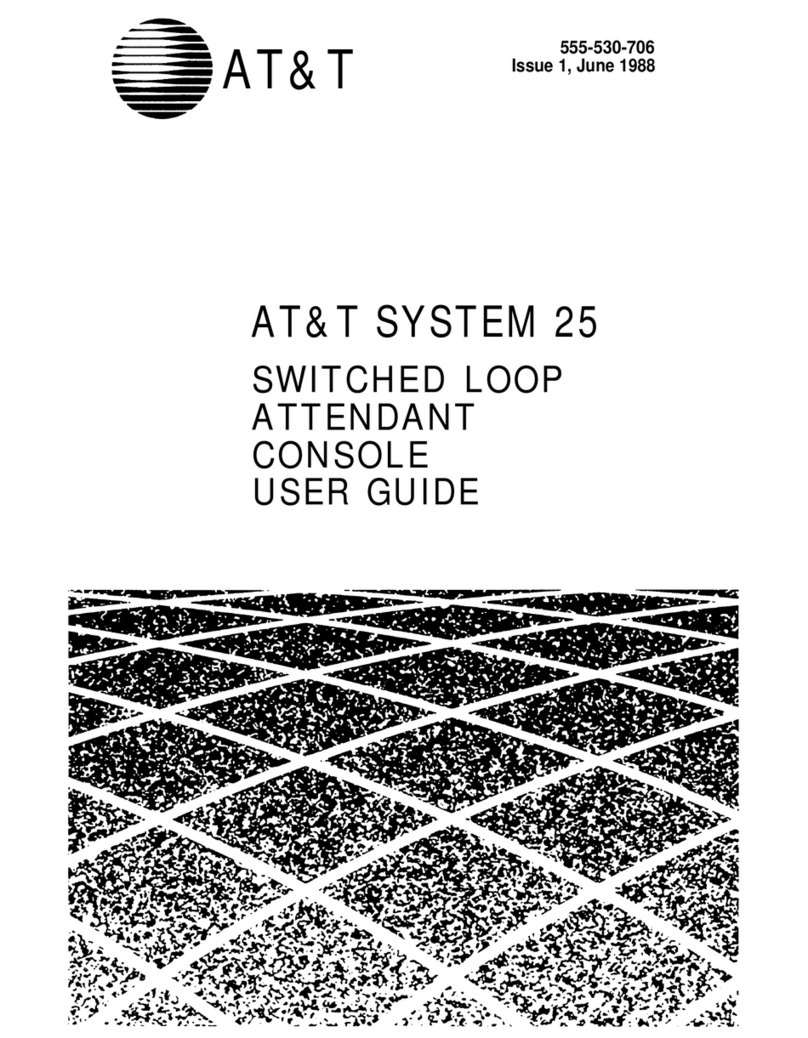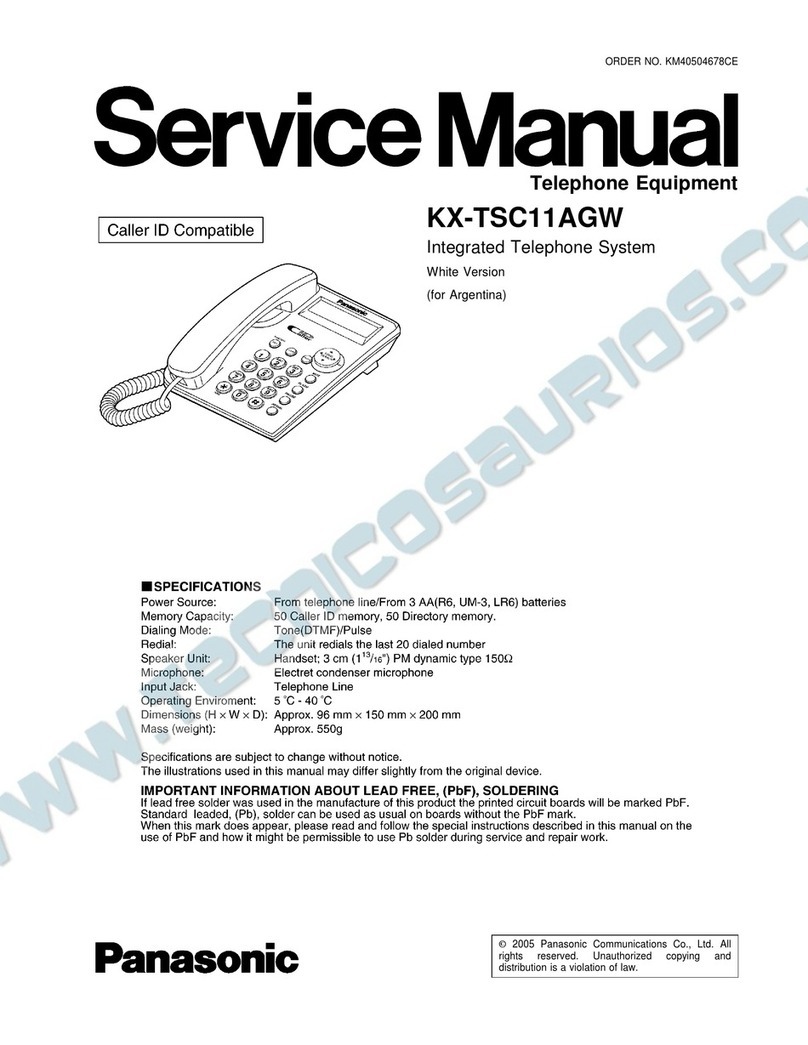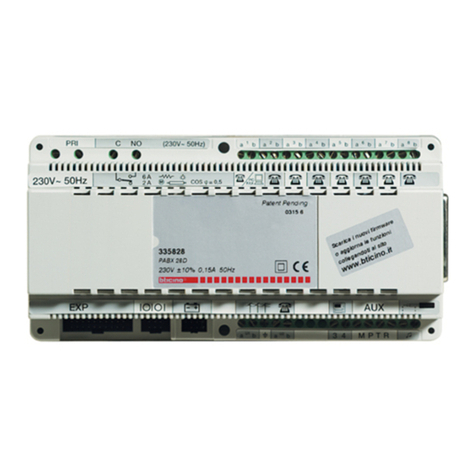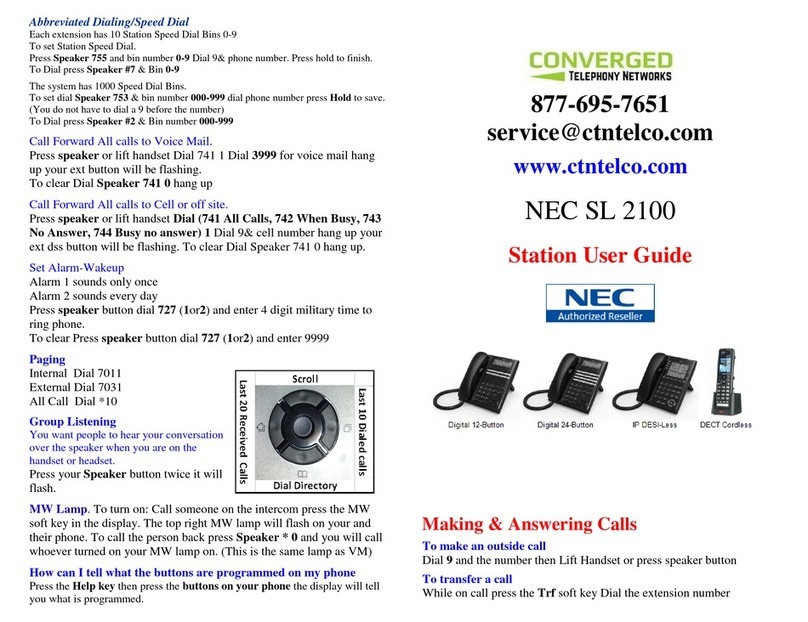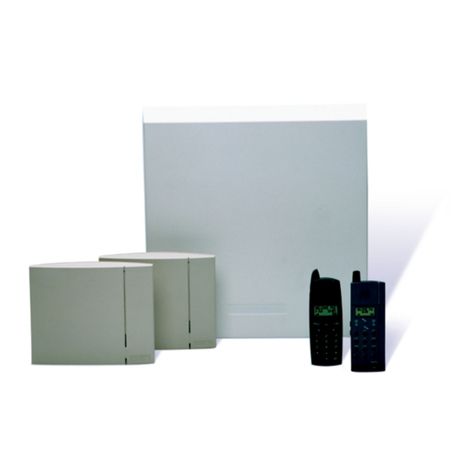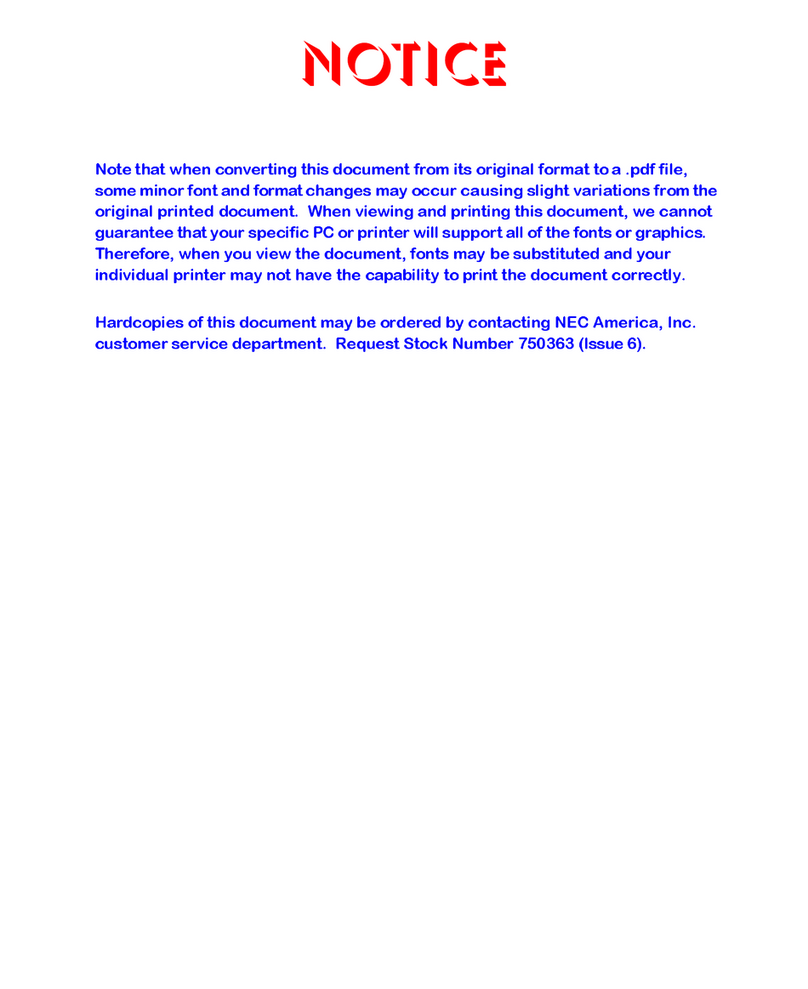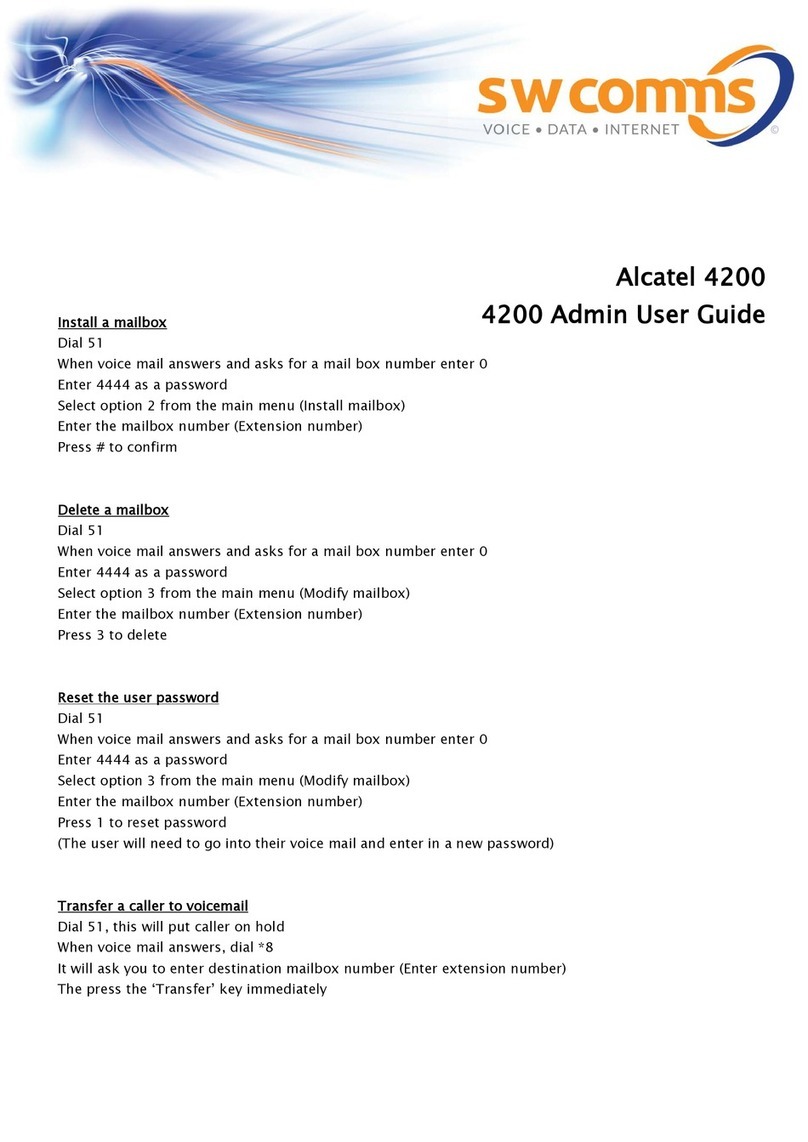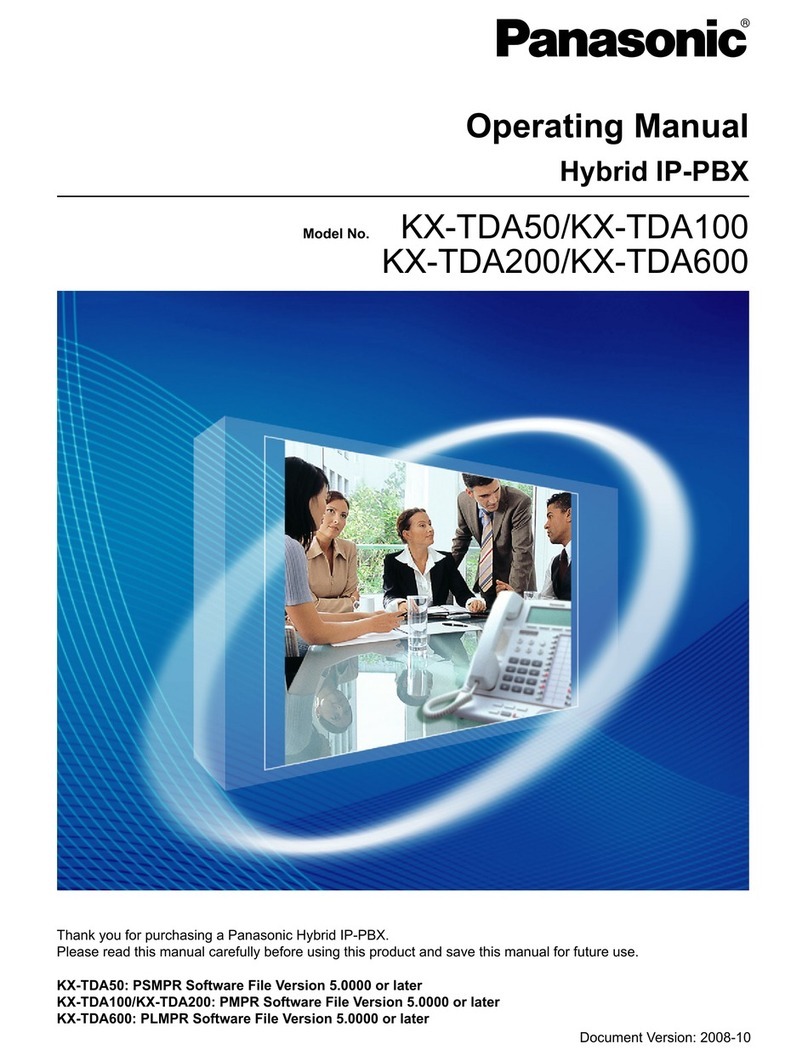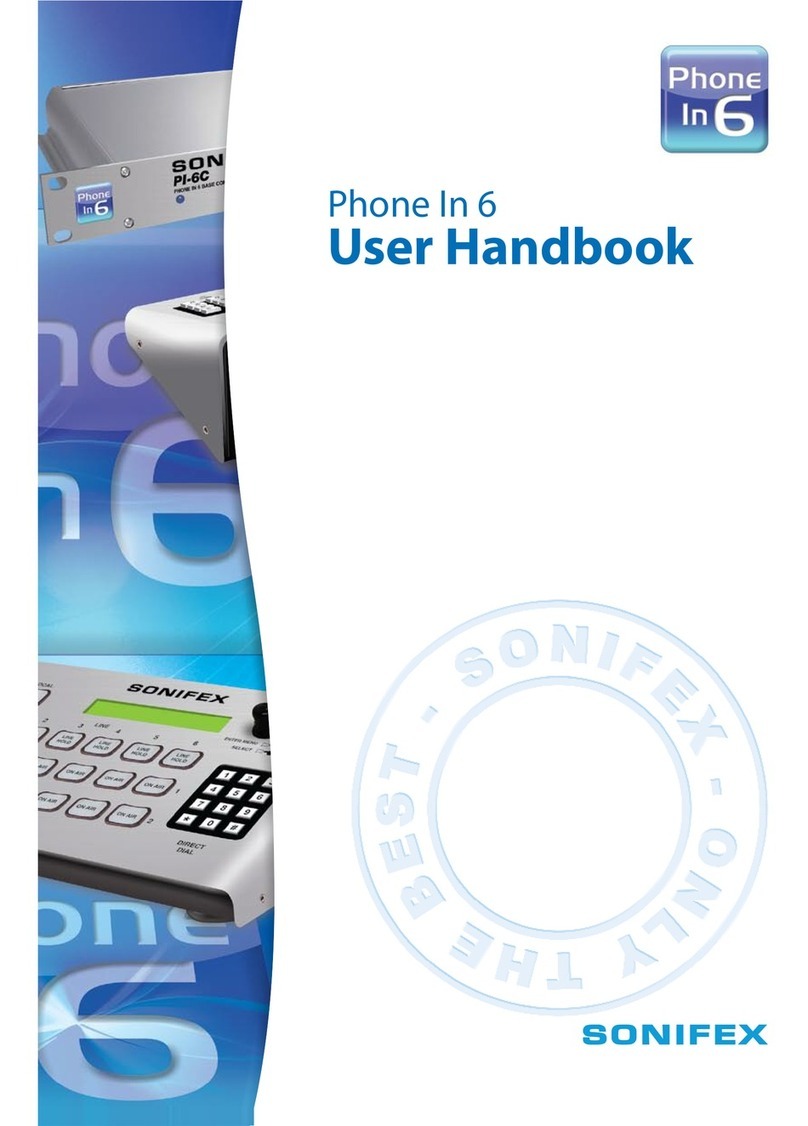
\
CIRCUIT
NOTE
5:
101.
PROVIDE
THE
KEV
TELEPHONE
SET
IN
ACCORDANCE
WITH
REQUIREMENTS
AS
INDICATED
IN
THE
FOLLOWING
TABLE-
THE
CORD
CONDUCTOR
COLORS
ARE
SHOWN
UNDER
THE
DESIGNATION
Of
THE
TERMINALS
IN
THE
SET, EXCEPT
WHERE
"DO" APPEARS
WHICH
INDICATES THAT
THE
SPADE
TIP
Of
THE
CONDUCTOR
IS
TAPED
AND
DRESSED
UNDER
THE
TERMINAL PLATE
Of
THE
KEY.
1
I
~-
~--
------------------------------.--.----------,------------,----~---------~------------~-----------r--------~~----------r~~~"'----.-----------~~~~----------------------
•.
FEATURES
PROVIDED
FOR
CODING
TO
LINE 1
TO
LINE 2
TO
LINE 3
TO
LINE 4
TO
LINE 5
TO
LINE 6 SIGNALING
ST:J~.~N
RINGER
TO
EXCLUDED
~~;o6~
LAMP LEADS
OR
SIGNALING
OR
SIGNALING
OR
SIGNALING
OR
SIGNALING
CKTS.
.AMI"
LEADS STATIONS
";,;·,r'
--STATION
CONTROL
KEY
SIGNAL
f---~-~-.-----,------,----+--+-.--.-:::BA"'Lc-r:HO-:::L-,D+-.---r--rH-c:O:-L-::Dt--r'-·--1------·
HOLD HOLD
OLD
HOLC
1 l
PI!
-:::}
,.
ARRANGEMENT EXCLLAMPSS KT SET
CODE
CORD
KEY
RINGTIP
OR
OR
RINGTIP BAL
OR
RING
TrP
BAL
AOR
RING
TIP BAL AORRING
TIP
BALAOR
RING
TIP
AOR
SIG.LEADS
:R~
BUSY R B
RINOJI'-P
BALHOLCRI.,TIFLI~E~A:;
LI~E
LI~E
LI:E
LI~EL~,
H•HOLD
P•PrCKUP
S•SIGNAL
KEY
SEE
BUSY
I
FIG
SEE
NOTE
301
GOOE
CODE
AI A A
~-
·~
SIG
SIG
SIG
SIG
pS•CONVERTIBLE
PICKUP
SIGNAL
NOTE
LAMP : f--::·-·--
<><~I<,NATION
OF
TERMINALS
ON
KEY
ANO
LAMP
TERMINAL
STRIPS EXCEPT
AS
OTHERWIS.£E:-'!S.!.T~A.'.T.£E~D-'---,--,--,--r-,--,--r---r.,.--,--r---,......,-,-~,----,,---j
C•CUTOFF ITURNBUTTON) 310
DIAL
..
ANUAL
IR
IT
18
IH 2R
2Ti
DO"
2H
3R
3T
l
DD"
3H
4R
4T
DD"
4H
5R
5T
DD" 5H,
6R
6T
6H IS SOR2sj
SG
L2(0NINO.CL
R::~RTHRI
ET
EB
~E_H_
CR
CT
1
LG
2 3 4 5 6
~--P~-Po_Po
1 1 s4iisilw
s4oBAW
DI4D 3
588
A R G v
BK
BL
w·eR-R
BR·GBR·YBR:_eKj_BR·BLBR-w Y·BLY-wf--
..
-·
-----~---+--+-+-----4--1-----+-+--+-+----1
e-----..;==-~====----+--1---+--+
-4----+---+-----'r-------~-
-
f---
-t
~·
---
-t-
--
t
~
--
-c--
- -
~-~~====~=~~-~-~-JT+--~-2~~s~~~s~s~w~s~~~B~A~w*---J.-~D~I~~~-~3~.---+-hR~~G~~Y~t~a~K~~B~L~~w~e~R~-~R~B~R~~~~~~~~~BLB~w
G~
~BL~w--
1
--~--e--
s~ ~BK s~L
~w
Ho
Po
PoPO
1
f----t--.!....-+----+--+--"--+---+---~------'
5eee
\
i-----~G=cp~O~P"'o"'·=Po"'2!n"=Po"'s~---!---.f.---J
3
s~;:B~
~~4A~t
~~_ll~~~3j~~BBC
R G
~
:~
:~C..~~~~~
~~~;~~R-BK~~:R~W
R-G
R=~~
R-BL
____
-_--
f---+-
__
~~
~~
~=~-=-
!;~y::
=·1·~
_
--
--c---~;~-KJ--S---BL+S---w+s---6-R+-f----i
__
IH()
Po
Po Po
Po Po I
1---f---r-r---~=-
I
564BB\I;Is648A'wl----
'__o2B_A_::i:~
8
_
9
__
A
__
+--+f--"R'--+_G,+Y
BK
_B_l,_
'II
BR--R~~~
sii:YeR·BK
BR:el."BFM¥~-~:'(_~BK
~:BL
R-w
G:Y~e'K"G-BLC..--t--
:~
1--
-+---
---
----
Y~Bl~~
---
f--_:::__1--f----
s-vfs::'sK~_:_BL,_ii:-_w
S-BR
BR
f-~~"'H=io~P=iO."=P~Oi==P~Oi==P~0~
5
~0~~'-i--1f-~J+---·-_-
_-
++-
_-
r_l-·-1o-5-5':64"_lC:tJBV\.W'f5'!'6:::4C"'-A'.":W+---
t---~~5_A-
__
3
___
t--_
58
_9
_0
_-+----l-R-t-_G--t-
__
Y-t
!lK
__
B'=
W
BR
R
,!!f!.:G
BR·Y
BR·BK
BR--BL
BR-W
R-G
R·Y
R-BK
R·BL
_____
1----
____
___
e--
_ -
-G:
BL
~
-~---
~BL
y;,v
-j - - - . _ S-Y S·BK S-BL
S·W+S'-·_,_B_R+-------4-~
[ H0 P0 P0 P0 s0 s0 I v 1
s64Dow
s64DAw
D25A·
3 5B9
e:
R G v
BK
aL w
eR-R
eR-G
sR-Y
eR
BK
BR-BL
sR-w~
~
~
t R·BL
G·BL
iG-w Y-llL
v-w
~
s-Y
s-eK
s-BL
s-w
~
f.-~~;;P;;o;;;P;:O;;;p;:O;;;P;:b;;;P;'6;;;;:P;';6~1--i-.j__;f---.j~+-.j--+-3-f-5-6-5A_BV::
565AAW
D34A-3
589C
R G . Y
BK
BL W
BR·G
BR·Y
BR-6K
BR·W
R·G
R·Y
R·Bl
R·W G·Y
G·Bl
G·W
Y·BK
R·13K
C·BK
BR·BL
Y·BL
Y-'N~K-13L
BK·W
BL·W
S
~-
Y S·BK
S·BL
S·W
S·BR
BR
BR·F
[
Ho
Po
Po
P6
P6
P~
j v
.;
v 2 s6sssw
s6sBAw
--t--D-3_4_A_·_3-+_!5_B_9_a
__
+---+-R---t-G-+--' , " , " w "
~';;;:;
"'""'
":""_.,'
,,'
,:;,
',_;~
,.
,:;-~,
•-oc
C--
·1l•
,_,,
',"
.~:
l"'~
'
,_,
~
'~"
':_•
,'~'-R+e
___
R+---1
~-'-H_o_P_O_p_O_p_O_p_~
__
C~-~-.j-~-.j+-.J-
41
-4-~5-6-5E_B_W"·5~6-5~E-A~W-:I-----~·-~D~3~-I-A~-~3-:~-5-8_9_F--:--:~R-.·G~:--
__
-Y_-."B_K_~C-B-Li•-W~j-B-R~---R·LB~R-·-·GLB~R-·~~~,.W~4-
••
•oc
~~
~:
__
~-·~
':"_~-~-~··~~,--~-~-
~·~-
c=:::)
A CIRCLE
AROUND
A
COLOR
ABOVf INDICATES A
CORD
CONDUCTOR
•
DO
INDICATES CONDUCTORS THAT
ARE
TAPED
L------------'--L..-....L
__
__L
_
_L
__
J._
__
....L
__
__r
____
__L
___
_J._j____.!
____
W_H_IC_H_IS_N_O_T_R_cE_O_U_IR_E_D_F_O_R_U_S
E
IN
THIS SET,
AND
STORED
UNDER THE
TERMINAL
PLATE
OF
THE
KEY
________________________
_J
INFORMATION
NOTES:
310.
FOR
MANUAL
SERVICE
REPLACE
THE
DIAL OF
THE
CORRE-
SPONDING DIAL
SET
(E.G.-540BB)
WITH A
958
APPARATUS
BLANK AND
TRANSFER
THE
GREEN
KEY
LEAD
FROM
TER-
MINAL
"F"
TO
TERMINAL "RR"
ON
THE
NETWORK
TO
OB-
TAIN
THE
MANUAL
SET
(E.G.-540BA).
302.
PROVIDE
"M"
WIRING WHEN
THE
BUZZER
IS
TO
OPERATE
ON
60
CYCLE AC, AND
PROVIDE
"N"
WIRING WHEN
THE
BUZZER
IS
TO
OPERATE
ON
DC.
303.
All
CONVERTIBLE
KEY
POSITIONS
ARE
ARRANGED
IN
THE
SHOP
AS
PICKUP
POSITIONS.
TO
CONVERT A
KEY
POSITION
FROM
PICKUP
(LOCKING) TO SIGNALING (NON-LOCKING).
REMOVE
THE
SCREW
DET
All
P-12A892
ENTIRELY
FROM
THE
PLUNGER
AT
THE
KEY
POSITION TO
BE
CONVERTED.
MAKE
THE
NECESSARY
CONNECTION CHANGES
AS
SHOWN
IN
TABLE
C OF
THE
FIGURE
INVOLVED.
TO
RECONVERT
A
KEY
POSITION
TO
LOCKING,
INSERT
A
SCREW
DETAIL
P-12A892.
304.
WHEN USING
THE
ARRANGEMENT
FOR
A
COMMON
SIG-
NALING
KEY
FOR
TWO
OR
THREE,
PRIVATE
AND INTERCOM-
MUNICATING
LINES
AS
PROVIDED
FOR
IN
FIG.
2,
THE
SIXTH
KEY
IS
CONVERTED
TO
NON-LOCKING AND
IS
USED
AS
THE
SIGNALING
KEY.
THE
SIGNALING
IS
DIRECTED
TO
THE
"S"
OR
"S
I"
LEAD
OF
THE
2nd
3rd
OR
4th
LINE,
AS
REQUIRED,
THROUGH
THE
CROSS
CONNECTIONS SHOWN
IN
TABLE
C
FOR
FIG.
2.
THE
AUTOMATIC CUTOFF
FEATURE
OF
THE
IAI
KEY
TELEPHONE
SYSTEM
CANNOT
BE
USED
ON
A
LINE
CON-
NECTED
TO
THE
COMMON
SIGNALING
KEY.
305.
TO
PROVIDE
FOR
A STATION
BUSY
LAMP
FOR
THOSE
SETS
WHERE
SPECIFIC
PROVISION
FOR
THIS
FEATURE
IS
MADE
(SEE
TABLE
NOTE
101}
THE
NECESSARY
CONNECTION
CHANGES SHOULD
BE
MADE
AS
SHOWN
IN
TABLE
A
OF
THE
PROPER
CIRCUIT
FIGURE.
FOR
THE
IAI
KEY
TELEPHONE
SYSTEM
IT
IS
NECESSARY,
IN
ADDITION, TO
PROVIDE
A
IN91
DIODE
(G.E.
CO.
OR
EQUIV.)
AND A
MIW
CORD
(OR
EQUIV-
ALENT)
AND CONNECT
THEM
AS
SHOWN IN
FIGURE,
WITH
THE
DIODE
CLOSE
ENOUGH
TO
THE
TERMINALS
TO
PRE-
VENT
IT
TOUCHING
THE
CAN
OF
THE
425B
NETWORK.
SEE
ALSO CIRCUIT DRAWING,
SD-69241-0
I,
FOR
STATION
BUSY
SIGNAL.
306.
PROVIDE
"Y"
WIRING
FOR
METALLIC
RETURN.
(METALLIC
RETURN
SHALL ALWAYS
BE
PROVIDED
WHEN
THE
BATTERY
IS
NOT LOCATED
IN
THE
SAME
BLDG.
AS
THE
KEY
TELE-
PHONE
SYSTEM
OR
WHEN
IT
IS
LOCATED
IN
THE
SAME
BLDG.
AND
rT
IS
CHARGED
OVER
METALLIC
RETURN
FEED-
ERS.
METALLIC
RETURN
SHALL ALSO
BE
USED
ON
A-C
SUPPLY).
PROVIDE
"Z"
WIRING
FOR
CABLE
SHEATH
RETURN
(CABLE
SHEATH
RETURN
SHALL ONLY
BE
USED
WHEN
THE
BATTERY
IS
LOCALLY GROUNDED AND LOCATED
IN
THE
SAME
BLDG.
AS
KEY
TELEPHONE
SYSTEM.)
30i.
SETS
EQUIPPED
WITH CUTOFF
KEY
PER
FIGURE
4
ARE
WIRED
IN
THE
SHOP
WITH
THE
G-W
AND
R-W
LEADS
FROM
THE
CUTOFF
KEY
CONNECTED
TO
TERMINALS "2T" AND "2R"
RESPECTIVELY.
AS
SHOWN
IN
TABLE
B
FOR
THIS
FIGURE,
THESE
LEADS
MAY
BE
CONNECTED
BY
THE
INSTALLER
TO
OTHER
"R"
AND
'T'
TERMINALS TO CUT
OFF
EXTENSION
STATIONS
ON
LINES
OTHER
THAN
2.
WITH
THE
IAI
KEY
TELEPHONE
SYSTEM
THE
"A"
LEAD SHOWN IN FIG. 4
CON-
NECTING
TO
THE
EXTERNAL
CONNECTING BLOCK
FOR
LINE
2
MUST
ALSO
BE
CONNECTED
TO
THE
CORRESPOND-
ING
LINE.
30L
THE
RINGER
SHOULD
BE
CONNECTED WITHOUT CON-
DENSER
FOR
PRIVATE
LINE,
COMMON
OR
INTERCOMMUNI-
CATING
LINE
SIGNALS
EXCEPT
WHERE
LOCAL
INSTRUC-
TIONS
DIRECT
OTHERWISE.
30~.
THE
"R"
AND "RR" TERMINALS
IN
THE
TABLES
A & BOF EACH
FIGURE
ARE
ON
THE
TERMINAL
STRIP
UNLESS
OTHERWISE
SPECIFIED.
31
1'.
THE
LAMPS
ARE
NOT REGULARLY
FURNISHED
AS
PART
OF
THE
CODED
SET.
31
I. BLOCKING RING P12A858
CAN
BE
USED
TO
MAKE A HOLD,
PICKUP
OR
SIGNAL
KEY
INOPERATIVE.
CONNECTION
OF
I N91
DIODE
FOR
USE
WITH
STATION
BUSY
LAMP
IAI
KEY
TEL, SYSTEM
4258
NETWORK
SEE
NOTE
30~
TOTERM.NORM
SEE
TABLE A
OF
FIGUPE
INVOLVED
"'
I
(/)
TO
SWITCH
*CONNECTIONS PROVIDED
WITH
SPADE
TIPS
TABLE
3
